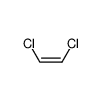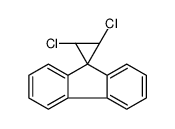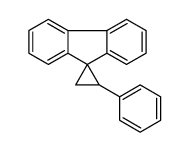1.Identification
1.1 GHS Product identifier
| Product name | cis-1,2-dichloroethene |
|---|
1.2 Other means of identification
| Product number | - |
|---|---|
| Other names | (Z)-1,2-dichloroethene |
1.3 Recommended use of the chemical and restrictions on use
| Identified uses | For industry use only. Volatile organic compounds |
|---|---|
| Uses advised against | no data available |
1.4 Supplier's details
| Company | MOLBASE (Shanghai) Biotechnology Co., Ltd. |
|---|---|
| Address | Floor 4 & 5, Building 12, No. 1001 North Qinzhou Road, Xuhui District, Shanghai, China |
| Telephone | +86(21)64956998 |
| Fax | +86(21)54365166 |
1.5 Emergency phone number
| Emergency phone number | +86-400-6021-666 |
|---|---|
| Service hours | Monday to Friday, 9am-5pm (Standard time zone: UTC/GMT +8 hours). |
2.Hazard identification
2.1 Classification of the substance or mixture
Flammable liquids, Category 2
Acute toxicity - Inhalation, Category 4
Hazardous to the aquatic environment, long-term (Chronic) - Category Chronic 3
2.2 GHS label elements, including precautionary statements
| Pictogram(s) |   |
|---|---|
| Signal word | Danger |
| Hazard statement(s) | H225 Highly flammable liquid and vapour H332 Harmful if inhaled H412 Harmful to aquatic life with long lasting effects |
| Precautionary statement(s) | |
| Prevention | P210 Keep away from heat, hot surfaces, sparks, open flames and other ignition sources. No smoking. P233 Keep container tightly closed. P240 Ground and bond container and receiving equipment. P241 Use explosion-proof [electrical/ventilating/lighting/...] equipment. P242 Use non-sparking tools. P243 Take action to prevent static discharges. P280 Wear protective gloves/protective clothing/eye protection/face protection. P261 Avoid breathing dust/fume/gas/mist/vapours/spray. P271 Use only outdoors or in a well-ventilated area. P273 Avoid release to the environment. |
| Response | P303+P361+P353 IF ON SKIN (or hair): Take off immediately all contaminated clothing. Rinse skin with water [or shower]. P370+P378 In case of fire: Use ... to extinguish. P304+P340 IF INHALED: Remove person to fresh air and keep comfortable for breathing. P312 Call a POISON CENTER/doctor/…if you feel unwell. |
| Storage | P403+P235 Store in a well-ventilated place. Keep cool. |
| Disposal | P501 Dispose of contents/container to ... |
2.3 Other hazards which do not result in classification
none
3.Composition/information on ingredients
3.1 Substances
| Chemical name | Common names and synonyms | CAS number | EC number | Concentration |
|---|---|---|---|---|
| cis-1,2-dichloroethene | cis-1,2-dichloroethene | 156-59-2 | none | 100% |
4.First-aid measures
4.1 Description of necessary first-aid measures
General advice
Consult a physician. Show this safety data sheet to the doctor in attendance.
If inhaled
Fresh air, rest. Refer for medical attention.
In case of skin contact
Remove contaminated clothes. Rinse skin with plenty of water or shower.
In case of eye contact
First rinse with plenty of water for several minutes (remove contact lenses if easily possible), then refer for medical attention.
If swallowed
Rinse mouth. Give one or two glasses of water to drink. Refer for medical attention .
4.2 Most important symptoms/effects, acute and delayed
Excerpt from ERG Guide 130P [Flammable Liquids (Water-Immiscible / Noxious)]: May cause toxic effects if inhaled or absorbed through skin. Inhalation or contact with material may irritate or burn skin and eyes. Fire will produce irritating, corrosive and/or toxic gases. Vapors may cause dizziness or suffocation. Runoff from fire control or dilution water may cause pollution. (ERG, 2016)
4.3 Indication of immediate medical attention and special treatment needed, if necessary
If this chemical gets into the eyes, irrigate immediately. If this chemical contacts the skin, wash with soap promptly. If a person breathes in large amounts of this chemical, move the exposed person to fresh air at once and perform artificial respiration. ... /1,2-Dichloroethylene/
5.Fire-fighting measures
5.1 Extinguishing media
Suitable extinguishing media
If material on fire or involved in fire: Do not extinguish fire unless flow can be stopped. use water in flooding quantities as fog. Solid streams of water may spread fire. Cool all affected containers with flooding quantities of water. Apply water from as far a distance as possible. Use foam, dry chemical, or carbon dioxide. /1,2-Dichloroethylene/
5.2 Specific hazards arising from the chemical
Excerpt from ERG Guide 130P [Flammable Liquids (Water-Immiscible / Noxious)]: HIGHLY FLAMMABLE: Will be easily ignited by heat, sparks or flames. Vapors may form explosive mixtures with air. Vapors may travel to source of ignition and flash back. Most vapors are heavier than air. They will spread along ground and collect in low or confined areas (sewers, basements, tanks). Vapor explosion hazard indoors, outdoors or in sewers. Those substances designated with a (P) may polymerize explosively when heated or involved in a fire. Runoff to sewer may create fire or explosion hazard. Containers may explode when heated. Many liquids are lighter than water. (ERG, 2016)
5.3 Special protective actions for fire-fighters
Wear self-contained breathing apparatus for firefighting if necessary.
6.Accidental release measures
6.1 Personal precautions, protective equipment and emergency procedures
Use personal protective equipment. Avoid dust formation. Avoid breathing vapours, mist or gas. Ensure adequate ventilation. Evacuate personnel to safe areas. Avoid breathing dust. For personal protection see section 8.
6.2 Environmental precautions
Personal protection: complete protective clothing including self-contained breathing apparatus. Ventilation. Remove all ignition sources. Do NOT wash away into sewer. Collect leaking and spilled liquid in sealable containers as far as possible. Absorb remaining liquid in dry sand or inert absorbent. Then store and dispose of according to local regulations.
6.3 Methods and materials for containment and cleaning up
1. REMOVE ALL IGNITION SOURCES. 2. VENTILATE AREA OF SPILL OR LEAK. 3. FOR SMALL QUANTITIES, ABSORB ON PAPER TOWELS. EVAPORATE IN SAFE PLACE (SUCH AS A FUME HOOD). ALLOW SUFFICIENT TIME FOR EVAPORATING VAPORS TO COMPLETELY CLEAR THE HOOD DUCTWORK. BURN PAPER IN SUITABLE LOCATION ... /1,2-DICHLOROETHYLENE/ 3. 1,2-DICHLOROETHYLENE SHOULD NOT BE ALLOWED TO ENTER CONFINED SPACE, SUCH AS SEWER, BECAUSE OF POSSIBILITY OF EXPLOSION. SEWERS DESIGNED TO PRECLUDE FORMATION OF EXPLOSIVE CONCN OF 1,2-DICHLOROETHYLENE VAPORS ARE PERMITTED. /1,2-DICHLOROETHYLENE/
7.Handling and storage
7.1 Precautions for safe handling
Avoid contact with skin and eyes. Avoid formation of dust and aerosols. Avoid exposure - obtain special instructions before use.Provide appropriate exhaust ventilation at places where dust is formed. For precautions see section 2.2.
7.2 Conditions for safe storage, including any incompatibilities
Fireproof. Well closed. See Chemical Dangers.
8.Exposure controls/personal protection
8.1 Control parameters
Occupational Exposure limit values
Recommended Exposure Limit: 10 Hour Time-Weighted Average: 200 ppm (790 mg/cu m). /1,2-Dichloroethylene/
Biological limit values
no data available
8.2 Appropriate engineering controls
Handle in accordance with good industrial hygiene and safety practice. Wash hands before breaks and at the end of workday.
8.3 Individual protection measures, such as personal protective equipment (PPE)
Eye/face protection
Safety glasses with side-shields conforming to EN166. Use equipment for eye protection tested and approved under appropriate government standards such as NIOSH (US) or EN 166(EU).
Skin protection
Wear impervious clothing. The type of protective equipment must be selected according to the concentration and amount of the dangerous substance at the specific workplace. Handle with gloves. Gloves must be inspected prior to use. Use proper glove removal technique(without touching glove's outer surface) to avoid skin contact with this product. Dispose of contaminated gloves after use in accordance with applicable laws and good laboratory practices. Wash and dry hands. The selected protective gloves have to satisfy the specifications of EU Directive 89/686/EEC and the standard EN 374 derived from it.
Respiratory protection
Wear dust mask when handling large quantities.
Thermal hazards
no data available
9.Physical and chemical properties
| Physical state | 1,2-dichloroethylene, (cis isomers) is a clear colorless liquid with an ether-like odor. Flash point 36-3.89°C. Denser than water and insoluble in water. Vapors heavier than air. Used in the making of perfumes. |
|---|---|
| Colour | Liquid |
| Odour | Sweetish |
| Melting point/ freezing point | 331°C(lit.) |
| Boiling point or initial boiling point and boiling range | 61°C |
| Flammability | Class IB Flammable Liquid: Fl.P. below 22.78°C and BP at or above 37.78°C.Highly flammable. Gives off irritating or toxic fumes (or gases) in a fire. |
| Lower and upper explosion limit / flammability limit | no data available |
| Flash point | 4°C(lit.) |
| Auto-ignition temperature | 460°C |
| Decomposition temperature | no data available |
| pH | no data available |
| Kinematic viscosity | 0.48 cp at 20°C (liquid) |
| Solubility | 1 to 5 mg/mL at 16.11°C |
| Partition coefficient n-octanol/water (log value) | log Kow = 1.86 |
| Vapour pressure | 200 mm Hg at 25°C ; 400 mm Hg at 41.11°C |
| Density and/or relative density | 1.284 g/mL at 25ºC(lit.) |
| Relative vapour density | 3.34 (Relative to Air) |
| Particle characteristics | no data available |
10.Stability and reactivity
10.1 Reactivity
no data available
10.2 Chemical stability
Stable under recommended storage conditions.
10.3 Possibility of hazardous reactions
Sometimes thought to be nonflammable, however, it is a dangerous fire hazard when exposed to heat or flame. Reaction with solid caustic alkalies or their concentrated solns produces chloracetylene gas, which ignites spontaneously in air.The vapour is heavier than air and may travel along the ground; distant ignition possible.1,2-DICHLOROETHYLENE and potassium hydroxide forms chloroacetylene, which is explosive and spontaneously flammable in air. It is highly toxic, Rutledge, p134(1968).
10.4 Conditions to avoid
no data available
10.5 Incompatible materials
May release explosive chloroacetylene by the contact with copper or copper alloys. /1,2-Dichloroethylene/
10.6 Hazardous decomposition products
Decomposes slowly on exposure to air, light, and moisture. /sym-Dichloroethylene/
11.Toxicological information
Acute toxicity
- Oral: no data available
- Inhalation: no data available
- Dermal: no data available
Skin corrosion/irritation
no data available
Serious eye damage/irritation
no data available
Respiratory or skin sensitization
no data available
Germ cell mutagenicity
no data available
Carcinogenicity
EPA: Not classifiable as to human carcinogenicity. IARC: Not evaluated. NTP: Not evaluated
Reproductive toxicity
no data available
STOT-single exposure
no data available
STOT-repeated exposure
no data available
Aspiration hazard
no data available
12.Ecological information
12.1 Toxicity
- Toxicity to fish: no data available
- Toxicity to daphnia and other aquatic invertebrates: no data available
- Toxicity to algae: no data available
- Toxicity to microorganisms: no data available
12.2 Persistence and degradability
AEROBIC: Chlorinated ethenes generally resist biodegradation when incubated under aerobic conditions(1). cis-1,2-Dichloroethylene, present at 2.6 mg/L reached 0% of its theoretical BOD in 4 weeks using an activated sludge inoculum at 1 drop/L and the Japanese MITI test(2). In an enrichment biodegradability screening test employing a wastewater inoculum, the average total loss for cis-1,2-dichloroethylene, present at 5 ppm, was 54% in 7 days; 34% loss due to volatilization occurred in 10 days(3). Using enriched methane-utilizing bacteria developed from a sediment mixed culture, CO2-labeled cis-1,2-dichloroethylene, present at 660 ppb was completely degraded within 50 hours; degradation products were not identified(4). Mineralization of C14-labeled 1,2-dichloroethylene (mixture of 20% trans and 71% cis isomers) was observed under aerobic conditions in streambed sediments characterized by a high content of natural organic matter (2.5% dry mass organic content) and saturated with humic acid-laden black water(5); 67% of C14-labeled CO2 was recovered in 50 days(5) which corresponds to a first-order degradation half-life of 31 days(SRC). Biotransformation of cis-1,2-dichloroethylene was increased with the addition of glucose in aerobic studies done with two aquifer subsoils and one river sediment(6). cis-1,2-Dichloroethylene, a degradation product of pollutants including tetrachloroethylene and trichloroethylene, was degraded by Dehalococcoides ethenogenes strain 195 under aerobic conditions(7). Aerobic cometabolism of cis-1,2-dichloroethylene in five laboratory and field studies had reported first order degradation rates of 0.081 to 1.96/day(8). cis-1,2-Dichloroethylene, present at 170 ug/L, was 90 and 50% biodegraded in 204 days using a chloroethene-contaminated sediment/groundwater (Copenhagen, Denmark, workshop for locomotive engines) inoculum amended with methane and oxygen, respectively. Using a chloroethene-contaminated sediment/groundwater (Frederikssund, Denmark, industrial area), the compound was 20-35% and 40% biodegraded in 97 and 274 days, respectively(9).
12.3 Bioaccumulative potential
An estimated BCF of 8 was calculated in fish for cis-1,2-dichloroethylene(SRC), using a log Kow of 1.86(1) and a regression-derived equation(2). According to a classification scheme(3), this BCF suggests the potential for bioconcentration in aquatic organisms is low(SRC).
12.4 Mobility in soil
The Koc of cis-1,2-dichloroethylene has been reported to be 49(1). According to a classification scheme(2), this Koc value suggests that cis-1,2-dichloroethylene is expected to have very high mobility in soil.
12.5 Other adverse effects
no data available
13.Disposal considerations
13.1 Disposal methods
Product
The material can be disposed of by removal to a licensed chemical destruction plant or by controlled incineration with flue gas scrubbing. Do not contaminate water, foodstuffs, feed or seed by storage or disposal. Do not discharge to sewer systems.
Contaminated packaging
Containers can be triply rinsed (or equivalent) and offered for recycling or reconditioning. Alternatively, the packaging can be punctured to make it unusable for other purposes and then be disposed of in a sanitary landfill. Controlled incineration with flue gas scrubbing is possible for combustible packaging materials.
14.Transport information
14.1 UN Number
| ADR/RID: UN1150 | IMDG: UN1150 | IATA: UN1150 |
14.2 UN Proper Shipping Name
| ADR/RID: 1,2-DICHLOROETHYLENE |
| IMDG: 1,2-DICHLOROETHYLENE |
| IATA: 1,2-DICHLOROETHYLENE |
14.3 Transport hazard class(es)
| ADR/RID: 3 | IMDG: 3 | IATA: 3 |
14.4 Packing group, if applicable
| ADR/RID: II | IMDG: II | IATA: II |
14.5 Environmental hazards
| ADR/RID: no | IMDG: no | IATA: no |
14.6 Special precautions for user
no data available
14.7 Transport in bulk according to Annex II of MARPOL 73/78 and the IBC Code
no data available
15.Regulatory information
15.1 Safety, health and environmental regulations specific for the product in question
| Chemical name | Common names and synonyms | CAS number | EC number |
|---|---|---|---|
| cis-1,2-dichloroethene | cis-1,2-dichloroethene | 156-59-2 | none |
| European Inventory of Existing Commercial Chemical Substances (EINECS) | Listed. | ||
| EC Inventory | Listed. | ||
| United States Toxic Substances Control Act (TSCA) Inventory | Listed. | ||
| China Catalog of Hazardous chemicals 2015 | Not Listed. | ||
| New Zealand Inventory of Chemicals (NZIoC) | Listed. | ||
| Philippines Inventory of Chemicals and Chemical Substances (PICCS) | Not Listed. | ||
| Vietnam National Chemical Inventory | Not Listed. | ||
| Chinese Chemical Inventory of Existing Chemical Substances (China IECSC) | Listed. | ||
16.Other information
Information on revision
| Creation Date | Aug 10, 2017 |
|---|---|
| Revision Date | Aug 10, 2017 |
Abbreviations and acronyms
- CAS: Chemical Abstracts Service
- ADR: European Agreement concerning the International Carriage of Dangerous Goods by Road
- RID: Regulation concerning the International Carriage of Dangerous Goods by Rail
- IMDG: International Maritime Dangerous Goods
- IATA: International Air Transportation Association
- TWA: Time Weighted Average
- STEL: Short term exposure limit
- LC50: Lethal Concentration 50%
- LD50: Lethal Dose 50%
- EC50: Effective Concentration 50%
References
- IPCS - The International Chemical Safety Cards (ICSC), website: http://www.ilo.org/dyn/icsc/showcard.home
- HSDB - Hazardous Substances Data Bank, website: https://toxnet.nlm.nih.gov/newtoxnet/hsdb.htm
- IARC - International Agency for Research on Cancer, website: http://www.iarc.fr/
- eChemPortal - The Global Portal to Information on Chemical Substances by OECD, website: http://www.echemportal.org/echemportal/index?pageID=0&request_locale=en
- CAMEO Chemicals, website: http://cameochemicals.noaa.gov/search/simple
- ChemIDplus, website: http://chem.sis.nlm.nih.gov/chemidplus/chemidlite.jsp
- ERG - Emergency Response Guidebook by U.S. Department of Transportation, website: http://www.phmsa.dot.gov/hazmat/library/erg
- Germany GESTIS-database on hazard substance, website: http://www.dguv.de/ifa/gestis/gestis-stoffdatenbank/index-2.jsp
- ECHA - European Chemicals Agency, website: https://echa.europa.eu/





















-
-

-
-
-

-
-
-

-
-
-

-
-
-

-
-
-

-
-
-

-
-
-

-
-
-

-
-
-

-
More Suppliers>>Hangzhou J&H Chemical Co., Ltd.
CHINA
Purity: 99%
Lead Time: 14 Day(s)
Price: -
Hangzhou J&H Chemical Co., Ltd.
CHINA
Purity: 98%
Lead Time: 7 Day(s)
Price: -
Henan Coreychem Co.,Ltd
CHINA
Purity: 99.99%
Lead Time: 3 Day(s)
Price: -
Hangzhou DayangChem Co., Ltd
CHINA
Purity: 98%
Lead Time: 7 Day(s)
Price: -
Hangzhou Bingochem Co., Ltd.
CHINA
Purity: 98%
Lead Time: 7 Day(s)
Price: -
TCI-Tixi Ai (Shanghai) Chemical Industry Development Co., Ltd.
CHINA
Purity: 99%
Lead Time: 7 Day(s)
Price: Min $165.83 /g
Santa Cruz Biotechnology, Inc.
UNITED STATES
Purity: 96%
Lead Time: 10 Day(s)
Price: Min $37 /g
MP BIOMEDICALS, LLC
FORT SMITH
Purity: 96%
Lead Time: 28 Day(s)
Price: Min $370 /g
Molchemical
CHINA
Purity: 96%
Lead Time: 7 Day(s)
Price: -
Acros Organics USA
GERMANY
Purity: 97%
Lead Time: 5 Day(s)
Price: Min $159 /ml